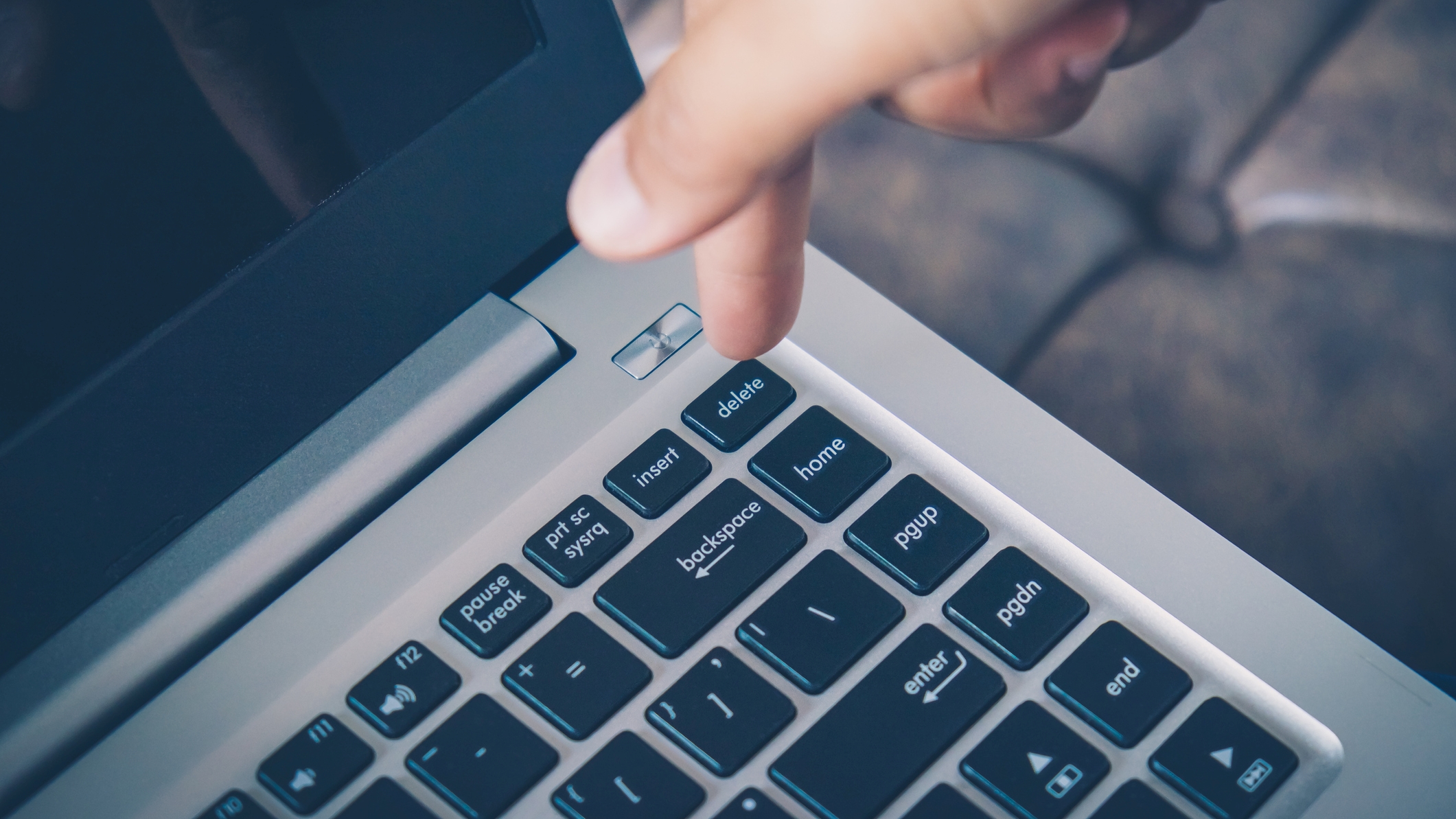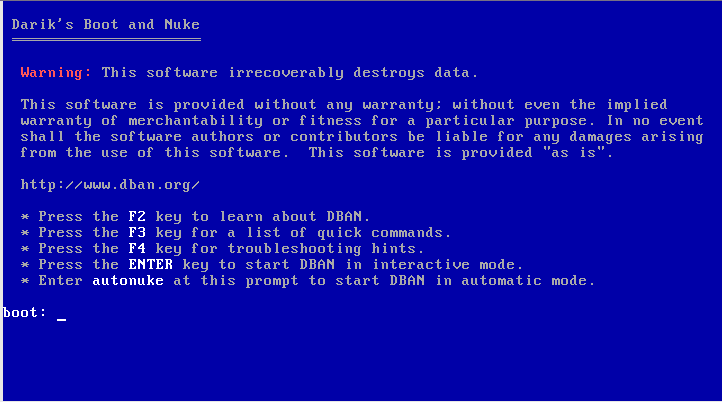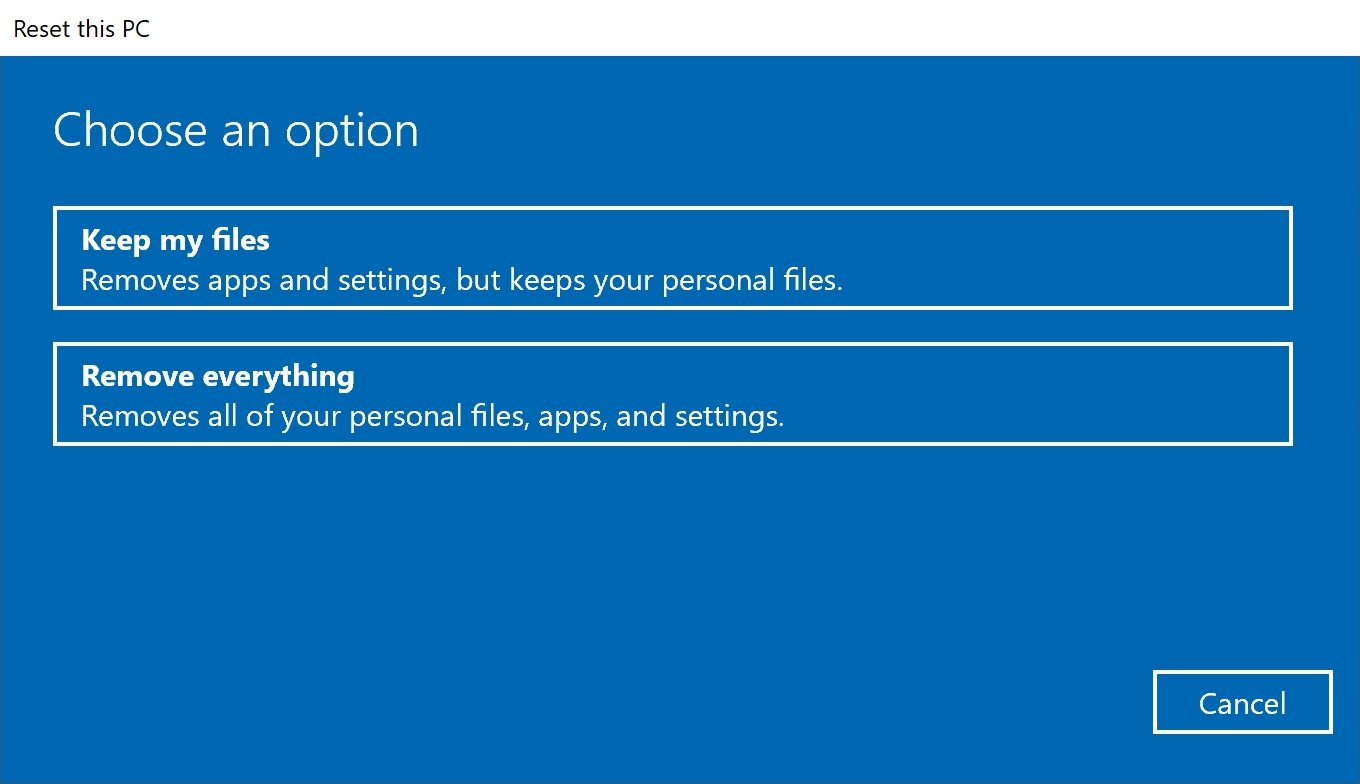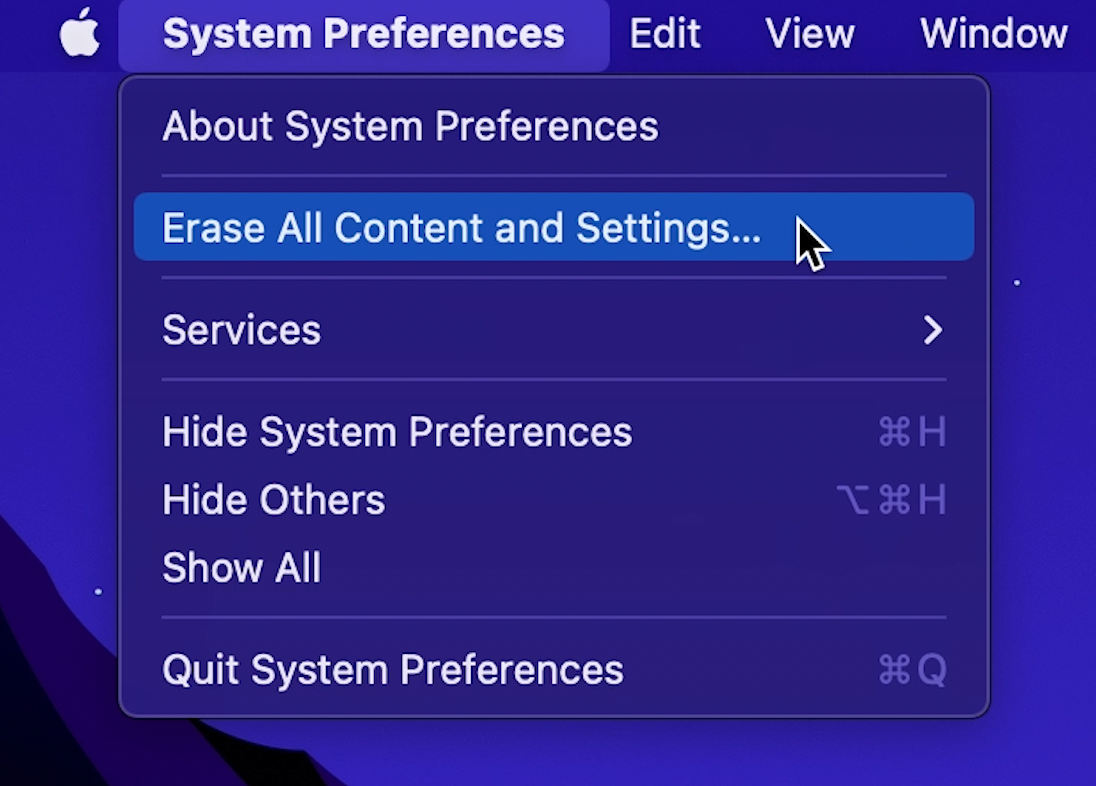How to wipe a laptop easily and securely
A step-by-step guide on how to wipe a laptop safely, whether it's running Windows, Mac, or Linux

Ensuring the complete removal of personal and proprietary data from a laptop isn't just a convenience; it is a critical safeguard. A single device often holds a vast history of sensitive information; simply hitting "delete" is rarely enough.
Files removed via standard deletion methods often remain on the hard drive or SSD, with metadata and cache files easily retrievable by anyone using basic forensic software. This data persistence poses a significant risk to financial records, client lists, and confidential passwords if the machine falls into the wrong hands, whether you are returning a work device, selling hardware on the second-hand market, or sending it for recycling.
Fortunately, modern operating systems have evolved to address this. Windows and macOS now feature robust, built-in "reset" tools designed to cryptographically erase or overwrite data, often negating the need for complex third-party software for the average user.
In this guide, we will explore the most effective data-wiping methods for Windows, macOS, and Linux. We will cover industry-recommended practices to ensure your drive is scrubbed clean, rendering your personal or business information irretrievable.
How to wipe a laptop: Preparation
Back up all critical files before starting the erasure process, as data recovery is effectively impossible on modern storage drives once wiped. You must safeguard documents, images, and credentials now, as there is no "undo" button later.
There are various strategies for backing up your data. The best one depends on the volume of information you need to secure. For moderate amounts of data and reliable internet, cloud storage (such as OneDrive, Google Drive, or iCloud) offers seamless, encrypted off-site protection. Business users should utilize enterprise-grade cloud solutions to ensure files remain secure and compliant. Business cloud storage solutions ensure your files are secure and accessible, or refer to our list of the best business backup software for dedicated tools.
If you are managing terabytes of data, using a high-capacity external SSD is often faster and more effective. This method keeps your data physically in your hands. Connect the drive to your laptop, ensuring it has sufficient capacity, and manually copy your materials. Always verify the integrity of the backup by opening a few random video or text files to ensure they are not corrupted before you wipe the source.
Sign up today and you will receive a free copy of our Future Focus 2025 report - the leading guidance on AI, cybersecurity and other IT challenges as per 700+ senior executives
Crucial step: De-authorization and unlinking
Before wiping, you must unlink the hardware from your digital identity. Sign out of iTunes, iCloud, or Microsoft accounts to prevent sync issues. Most importantly, you must disable "Find My Mac" (macOS) or "Find My Device" (Windows). Failure to do this can trigger "Activation Lock," rendering the laptop useless to the next user even after it is wiped. You should also de-authorize software licenses (like Adobe Creative Cloud) to save your seat counts.
Modern operating systems include built-in backup tools to help with this. Windows 10 and 11 encourage syncing via OneDrive in the Settings app, though the legacy File History tool remains for local backups. Mac users should rely on Time Machine for a complete system snapshot, while Linux distributions (like Ubuntu) support robust tools like Déjà Dup.
By implementing these measures beforehand, you ensure your digital life is preserved, and the hardware is truly ready for a new owner.
How to wipe a laptop: Step-by-step
How to wipe a Windows 7 (and older) laptop

Although Windows 7, Vista, and XP are long unsupported, they still linger on legacy hardware. If you are wiping an older laptop with a mechanical Hard Disk Drive (HDD), the industry standard remains DBAN (Darik’s Boot and Nuke).
Note: Do not use DBAN on modern Solid State Drives (SSDs) as it can reduce their lifespan and may not fully erase data due to wear-levelling algorithms.
Steps for mechanical drives:
- Download DBAN: Get the ISO from the official site.
- Create bootable media: Use a tool like Rufus to burn the ISO to a USB stick.
- Boot from USB: Restart the laptop and enter the BIOS/boot menu (usually F12 or Del).
- Nuke it: Follow the prompts to overwrite the drive.
If the laptop has an SSD, check the manufacturer's BIOS for a "Secure Erase" tool instead. If you plan to reuse the machine, do not reinstall Windows 7; upgrade to a lightweight Linux distro or Windows 10/11 if the hardware allows.
How to wipe a Windows 8/8.1 laptop
Windows 8 introduced the modern "Reset" feature, making third-party tools largely unnecessary for general users. Follow these steps to proceed:
- Open Settings: Swipe in from the right edge for the Charms bar, select Settings, then Change PC Settings.
- Locate Recovery Options: Select Update and Recovery > Recovery.
- Remove Everything: Select Remove everything and reinstall Windows.
- Clean the drive: When prompted, choose the "Fully clean the drive" option. This takes significantly longer (hours versus minutes) but ensures the previous data is overwritten and difficult to recover.
How to wipe a Windows 10 laptop

Windows 10 streamlined the reset process (see the steps below).
Note that if you use BitLocker encryption, a simple reset is often secure enough, but the "clean drive" option adds a layer of certainty.
- Access Settings: Go to Start > Settings > Update & Security > Recovery.
- Start Reset: Under "Reset this PC," click Get started.
- Remove Everything: Choose Remove everything.
- Settings Change: Click "Change settings" and toggle "Clean data" to Yes.
- Confirm: Click Reset.
Without the "Clean data" toggle, the process is fast but less secure. With it enabled, Windows will overwrite your free space, which may take several hours depending on drive speed.
How to wipe a Windows 11 laptop
The process for Windows 11 is almost identical to 10, but the menu location has moved slightly. Follow these steps:
- Access Settings: Go to Start > Settings.
- Navigate to Recovery: Ensure you are in the System tab (left sidebar), then scroll down to click Recovery.
- Initiate: Click Reset PC.
- Selection: Choose Remove everything.
- Secure Option: Select "Cloud download" or "Local reinstall", then click "Change settings". Ensure "Clean data" is set to Yes to overwrite the drive securely.
How to Wipe a Mac Running macOS Monterey or Later

For Macs with Apple Silicon (M1/M2/M3) or the T2 Security Chip running macOS Monterey or later, the process is now similar to wiping an iPhone. This "cryptographic erase" destroys the encryption keys, rendering data instantly unrecoverable.
Before You Begin: Back Up Your Mac!
Essential Data Backup: Prior to performing a factory reset, create a comprehensive backup of your important files using Time Machine or your preferred backup solution. This step is crucial to prevent data loss.
Steps to Erase All Content and Settings on macOS:
- Open Settings: A) macOS Ventura/Sonoma/Sequoia: Go to System Settings > General > Transfer or Reset > Erase All Content and Settings. B) macOS Monterey: Go to System Preferences, click "System Preferences" in the menu bar, and select Erase All Content and Settings.
- Authenticate: Enter your admin password.
- Log out of Apple ID: The system will prompt you to sign out of iCloud to disable Activation Lock.
- Confirm: Click Erase All Content & Settings. The Mac will restart and display the "Hello" setup screen.
Your Mac will guide you through the erase and reset process. Once done, it will reboot in a fresh state, ready for sale, donation, or reuse with no personal data left.
How to wipe an older Mac
For Intel Macs without the T2 chip (pre-2018) or older macOS versions:
- Recovery Mode: Restart and hold Command (⌘) + R immediately.
- Disk Utility: Select Disk Utility > Continue.
- Erase: Select your main drive (usually "Macintosh HD") in the sidebar. Click Erase.
- Format Selection: A) Use APFS for SSDs. B) Use Mac OS Extended (Journaled) for older mechanical HDDs.
- Security Options: (Optional) Click "Security Options" to choose a multi-pass overwrite if using a mechanical drive. This is unnecessary for SSDs.
- Finish: Click Erase Volume Group.
How to wipe a Linux laptop
Wiping Linux requires different commands depending on whether you use an SSD or an HDD.
- Boot from Live Media: You cannot wipe the drive you are currently using. Boot from a live Ubuntu USB stick.
- Open Terminal: Press Ctrl+Alt+T.
- Identify Drive: Run lsblk to find your drive identifier (e.g., /dev/nvme0n1 or /dev/sda).
- For SSDs (Instant & Secure):Run: sudo blkdiscard /dev/sdX (replace sdX with your drive). This triggers the SSD's controller to mark all blocks as empty, effectively erasing them instantly.
- For HDDs (Overwrite):Run: sudo dd if=/dev/urandom of=/dev/sdX bs=10M status=progress.Warning: This command is powerful. Ensure you have the correct drive identifier to avoid erasing your USB stick.
Data wiping best practice
Safeguarding your information demands more than hitting "delete." However, old advice about "35 passes" of overwriting is outdated and dangerous for modern SSDs.
- Understand storage types: For mechanical HDDs, a single overwrite pass (writing zeros over data) is sufficient to stop software recovery. For SSDs, use the "Secure Erase" command or "Reset" features built into the OS, as these interact with the hardware controller to sanitize flash memory.
- Encryption is key: If your drive was encrypted with BitLocker (Windows) or FileVault (macOS), wiping the drive essentially deletes the encryption key. Without the key, the leftover data is random noise. This is the most secure method.
- Third-party tools: If you cannot access the OS, use bootable tools like Parted Magic (paid) or ShredOS (free), which handle both secure erasing of SSDs and overwriting of HDDs properly.
- Verification: After wiping, attempt to run recovery software like Recuva or TestDisk. If they find nothing, your job is done.
By adopting these practices, you aren’t just deleting files; you’re ensuring that no meaningful traces of your personal or corporate data survive on the machine. This careful approach both protects your privacy and prepares the laptop for a secure and responsible transfer to its next owner or environment.
Troubleshooting common issues
Wiping a laptop, while generally straightforward, can sometimes encounter unexpected hurdles.
In some instances, you might find that the wiping process becomes stuck or takes an excessively long time. This can often be attributed to hardware issues, software conflicts, or simply the sheer volume of data being processed. To address this, ensure your laptop is connected to a reliable power source and check the hard drive's health using diagnostic tools. If the process seems frozen, a simple restart may help. Additionally, for those using bootable USBs, recreating the USB might resolve the problem. Remember, mechanical drives inherently take longer, while SSDs should be much quicker.
Error messages cropping up during the wiping process can be another cause for concern. These could be indicative of corrupted files, disk errors, or software incompatibilities. It’s essential to note the specific error message and search for it online, as this can offer valuable insights. Make sure the software you’re using is compatible with your system, and consider running the process in safe mode if issues persist. Sometimes, switching to a different wiping tool can also eliminate these errors.
Booting from external media, such as a USB drive or DVD, sometimes poses a challenge, too. If this occurs, verify that your BIOS/UEFI settings are configured correctly to allow booting from external media. Ensure that the bootable media was properly created and test it on another computer to rule out media issues. For UEFI systems, disabling Secure Boot might be necessary.
A common worry is whether the data has been completely erased. For peace of mind, multiple-pass wiping methods, which overwrite data several times, can be employed. Physically destroying the drive offers the utmost security, but for those selling or donating the drive, using tools that conform to military or government data-wiping standards can provide additional assurance. For SSDs, using tools that employ the ATA secure erase command is crucial to thoroughly clear the drive's flash memory.
Sometimes, laptops might freeze or crash during the wiping process. Ensuring the laptop is well-ventilated and not overheating can mitigate this problem. Running a memory diagnostic tool to check the RAM can be beneficial. Keeping the software up to date and recreating the bootable USB might also help. If the issue persists, it could indicate hardware failure, necessitating professional assistance.
Addressing these common issues can significantly improve the success rate and security of your laptop wiping process, ensuring your personal or business information is thoroughly protected.
Rene Millman is a freelance writer and broadcaster who covers cybersecurity, AI, IoT, and the cloud. He also works as a contributing analyst at GigaOm and has previously worked as an analyst for Gartner covering the infrastructure market. He has made numerous television appearances to give his views and expertise on technology trends and companies that affect and shape our lives. You can follow Rene Millman on Twitter.


